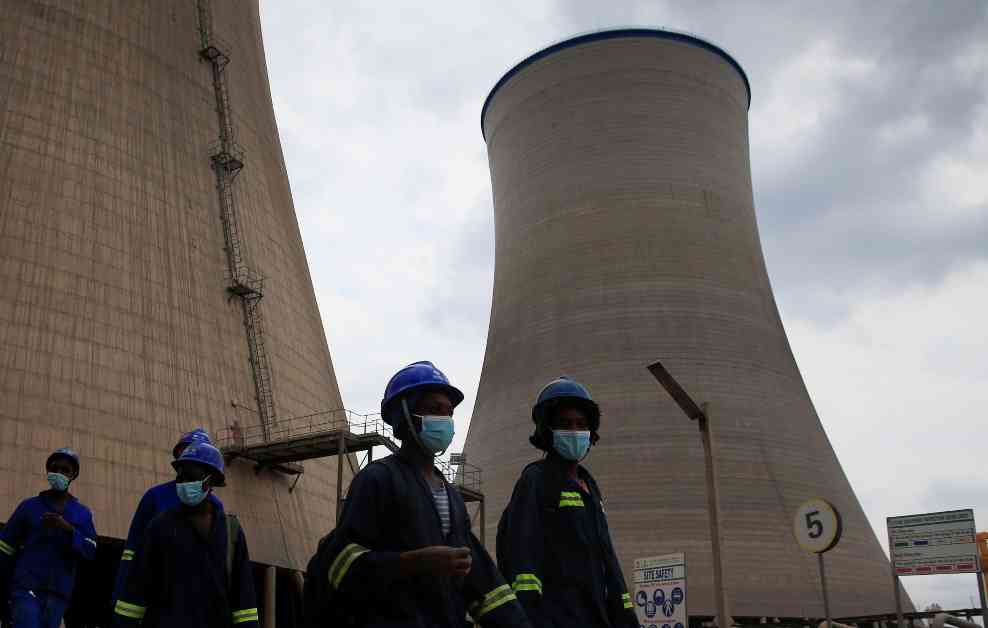Zimbabwe’s Energy Dilemma: A Closer Look at the Country’s Shift to Coal and Gas
Zimbabwe is facing an energy crisis of unprecedented proportions, with the worst drought in decades crippling the country’s hydropower plant, which supplies a significant portion of its electricity. As a result, the Southern African nation is struggling to keep up with its power demands, prompting the government to unveil a new climate plan aimed at reducing emissions by 2035.
The Kariba South hydropower plant, a key player in Zimbabwe’s energy landscape, is currently operating at a fraction of its capacity due to water shortages caused by the prolonged drought. To bridge the power deficit, the government has outlined plans to revamp the aging coal-powered Hwange Power Station and construct a new coal plant to increase capacity. Additionally, the country’s energy mix is set to shift towards gas and renewable sources in the coming years.
A Victim of Circumstance: The Human Side of Zimbabwe’s Energy Struggles
Kuda Manjonjo, an advocate for clean energy transitions, describes Zimbabwe as “a victim of circumstance” in the global energy landscape. Like many African nations, Zimbabwe finds itself in a difficult position, torn between the need for reliable energy supply and the challenges of transitioning to cleaner sources. The recent droughts and climate-related shocks have only exacerbated the country’s energy woes, leaving many without electricity for extended periods.
Manjonjo’s personal experience living in the Hwange area highlights the harsh reality faced by Zimbabweans during the peak of the energy crisis. With nearly a day of no electricity, the reliance on coal power becomes a stark necessity for many communities struggling to meet their basic energy needs.
A Global Trend: The Shift Towards Coal in Developing Nations
Zimbabwe’s decision to expand its coal and gas infrastructure is not an isolated case but rather part of a larger trend among developing countries. Neighboring Zambia, also grappling with reduced hydropower capacity, has similarly turned to coal to meet its energy demands. This resurgence in coal reliance reflects a broader failure to deliver just energy transitions in regions where financial support and infrastructure for renewable energy are lacking.
The global context further complicates Zimbabwe’s energy dilemma, with major emitters like the US scaling back climate finance commitments and increasing fossil fuel extraction. The recent termination of projects under the Power Africa initiative signals a broader retreat from renewable energy efforts in developing regions, perpetuating a cycle of dependence on fossil fuels.
Breaking the Cycle: The Urgent Need for Climate Finance in Africa
Experts warn that without adequate climate finance tailored to the needs of African nations, the reliance on fossil fuels will continue to hinder the transition to renewable energy. The short-term economic benefits of fossil fuels often outweigh the long-term gains of sustainable energy sources, creating a vicious cycle of climate shocks and increased emissions.
Daniel Sithole of the Green Shango Environment Trust emphasizes the critical need for international support to enable African countries to shift towards cleaner energy solutions. Without targeted financing and a global commitment to addressing climate challenges, the cycle of fossil fuel reliance will persist, undermining efforts to achieve a sustainable energy future for all.
In conclusion, Zimbabwe’s energy strategy underscores the complex interplay of environmental, economic, and social factors shaping energy transitions in developing nations. As the country navigates the challenges of meeting its power demands while reducing emissions, the need for equitable and sustainable solutions becomes increasingly urgent. By addressing the root causes of energy insecurity and investing in renewable alternatives, Zimbabwe and other African nations can pave the way for a more resilient and environmentally responsible energy future.














